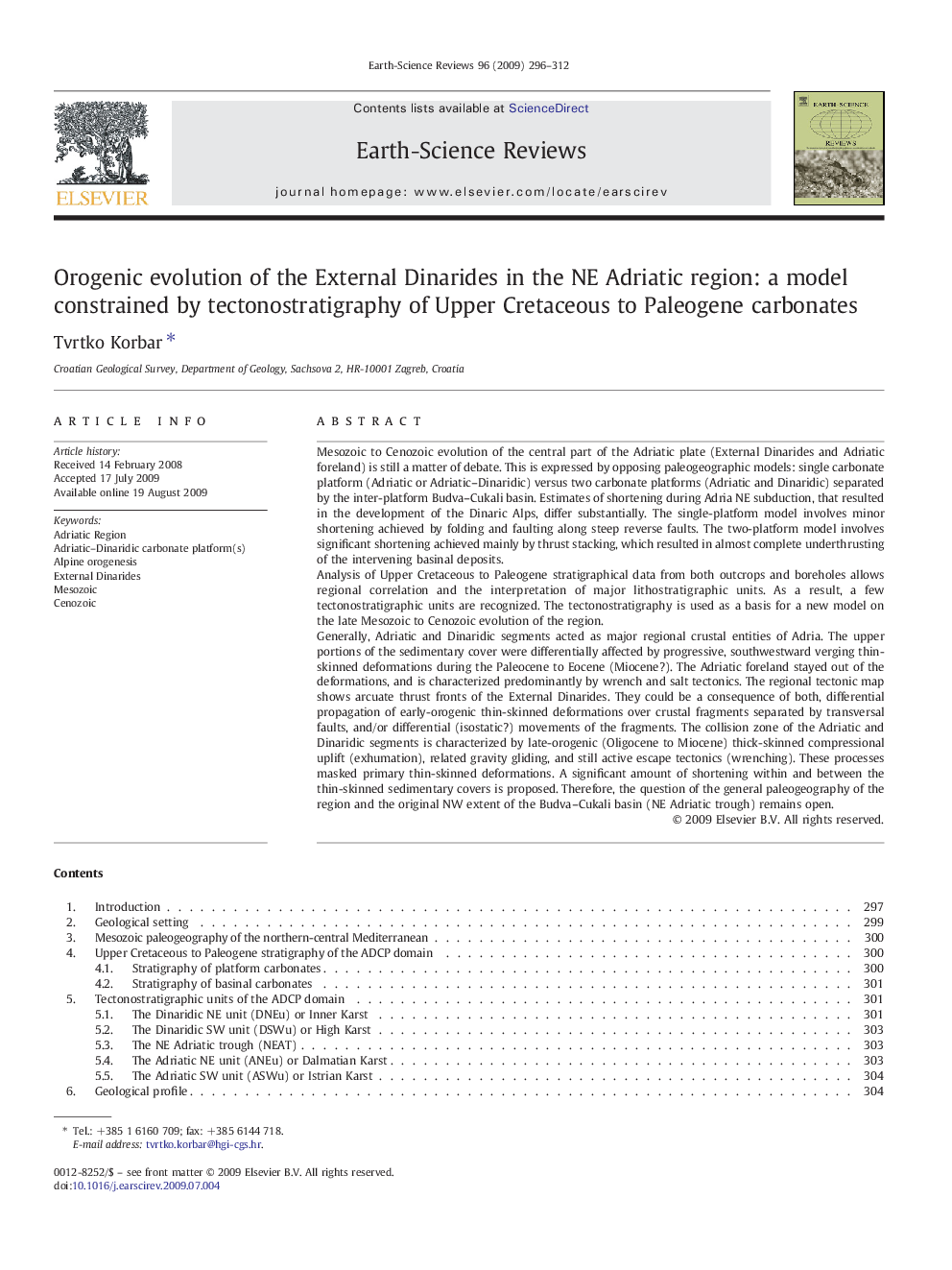| Article ID | Journal | Published Year | Pages | File Type |
|---|---|---|---|---|
| 4726166 | Earth-Science Reviews | 2009 | 17 Pages |
Mesozoic to Cenozoic evolution of the central part of the Adriatic plate (External Dinarides and Adriatic foreland) is still a matter of debate. This is expressed by opposing paleogeographic models: single carbonate platform (Adriatic or Adriatic–Dinaridic) versus two carbonate platforms (Adriatic and Dinaridic) separated by the inter-platform Budva–Cukali basin. Estimates of shortening during Adria NE subduction, that resulted in the development of the Dinaric Alps, differ substantially. The single-platform model involves minor shortening achieved by folding and faulting along steep reverse faults. The two-platform model involves significant shortening achieved mainly by thrust stacking, which resulted in almost complete underthrusting of the intervening basinal deposits.Analysis of Upper Cretaceous to Paleogene stratigraphical data from both outcrops and boreholes allows regional correlation and the interpretation of major lithostratigraphic units. As a result, a few tectonostratigraphic units are recognized. The tectonostratigraphy is used as a basis for a new model on the late Mesozoic to Cenozoic evolution of the region.Generally, Adriatic and Dinaridic segments acted as major regional crustal entities of Adria. The upper portions of the sedimentary cover were differentially affected by progressive, southwestward verging thin-skinned deformations during the Paleocene to Eocene (Miocene?). The Adriatic foreland stayed out of the deformations, and is characterized predominantly by wrench and salt tectonics. The regional tectonic map shows arcuate thrust fronts of the External Dinarides. They could be a consequence of both, differential propagation of early-orogenic thin-skinned deformations over crustal fragments separated by transversal faults, and/or differential (isostatic?) movements of the fragments. The collision zone of the Adriatic and Dinaridic segments is characterized by late-orogenic (Oligocene to Miocene) thick-skinned compressional uplift (exhumation), related gravity gliding, and still active escape tectonics (wrenching). These processes masked primary thin-skinned deformations. A significant amount of shortening within and between the thin-skinned sedimentary covers is proposed. Therefore, the question of the general paleogeography of the region and the original NW extent of the Budva–Cukali basin (NE Adriatic trough) remains open.
